The cost of Spider Veins (Sclerotherapy) in Thailand ranges from THB 18538 to 38502 (USD 520 to USD 1080)
Following is the list of cities and the associated costs for Spider Veins (Sclerotherapy) in Thailand
| City | Minimum Cost | Maximum Cost |
|---|---|---|
| Bangkok | USD 520/Session | USD 1000/Session |
| Country | Cost | Local_currency |
|---|---|---|
| Greece | USD 600 | Greece 552 |
| India | USD 250 | India 20788 |
| Lithuania | USD 520 | Lithuania 478 |
| Malaysia | USD 350 | Malaysia 1648 |
| Poland | USD 500 | Poland 2020 |
| Spain | USD 500 | Spain 460 |
| Thailand | USD 520 | Thailand 18538 |
| Tunisia | USD 600 | Tunisia 1866 |
| Turkey | USD 400 | Turkey 12056 |
| United Arab Emirates | USD 420 | United Arab Emirates 1541 |
| United Kingdom | USD 600 | United Kingdom 474 |
Treatment cost
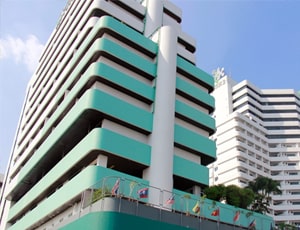
Types of Spider Veins (Sclerotherapy) in Phyathai 2 International Hospital and its associated cost
| Treatment Option | Approximate Cost Range (USD) | Approximate Cost Range (THB) |
|---|---|---|
| Spider Veins (Sclerotherapy) | 585 - 783 | 20831 - 28421 |
DOCTORS IN 11 SPECIALITIES
FACILITIES & AMENITIES
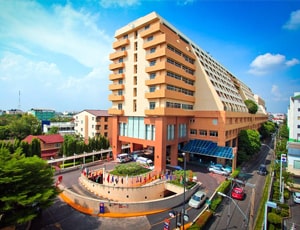
Types of Spider Veins (Sclerotherapy) in Vejthani Hospital and its associated cost
| Treatment Option | Approximate Cost Range (USD) | Approximate Cost Range (THB) |
|---|---|---|
| Spider Veins (Sclerotherapy) | 578 - 781 | 20789 - 27529 |
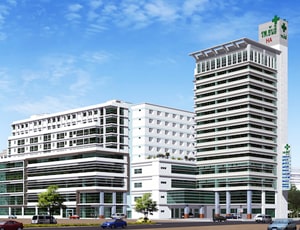
Types of Spider Veins (Sclerotherapy) in Yanhee International Hospital and its associated cost
| Treatment Option | Approximate Cost Range (USD) | Approximate Cost Range (THB) |
|---|---|---|
| Spider Veins (Sclerotherapy) | 595 - 776 | 20572 - 27519 |
DOCTORS IN 8 SPECIALITIES
FACILITIES & AMENITIES

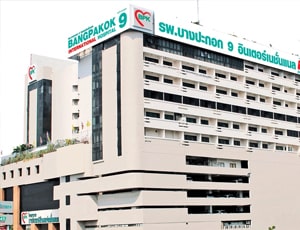
Types of Spider Veins (Sclerotherapy) in Bangpakok 9 International Hospital and its associated cost
| Treatment Option | Approximate Cost Range (USD) | Approximate Cost Range (THB) |
|---|---|---|
| Spider Veins (Sclerotherapy) | 592 - 787 | 21261 - 28554 |
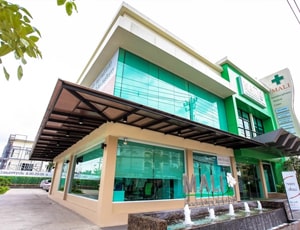
Types of Spider Veins (Sclerotherapy) in MALI Interdisciplinary Hospital and its associated cost
| Treatment Option | Approximate Cost Range (USD) | Approximate Cost Range (THB) |
|---|---|---|
| Spider Veins (Sclerotherapy) | 529 - 711 | 18864 - 25332 |
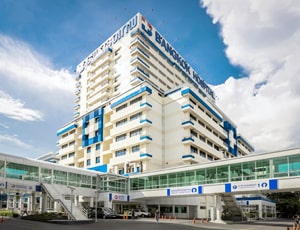
Types of Spider Veins (Sclerotherapy) in Bangkok Hospital and its associated cost
| Treatment Option | Approximate Cost Range (USD) | Approximate Cost Range (THB) |
|---|---|---|
| Spider Veins (Sclerotherapy) | 590 - 780 | 21187 - 27808 |
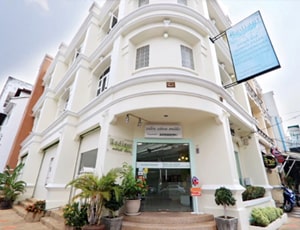
Types of Spider Veins (Sclerotherapy) in Radiance Skin Clinic and its associated cost
| Treatment Option | Approximate Cost Range (USD) | Approximate Cost Range (THB) |
|---|---|---|
| Spider Veins (Sclerotherapy) | 530 - 707 | 18747 - 25454 |
DOCTORS IN 2 SPECIALITIES
FACILITIES & AMENITIES
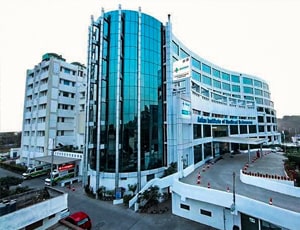
Types of Spider Veins (Sclerotherapy) in Asian Institute of Medical Sciences and its associated cost
| Treatment Option | Approximate Cost Range (USD) | Approximate Cost Range (INR) |
|---|---|---|
| Spider Veins (Sclerotherapy) | 253 - 405 | 20887 - 33341 |
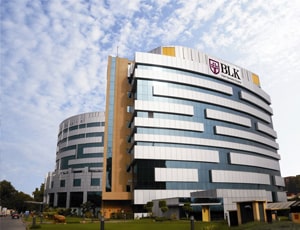
The cost for Spider Veins (Sclerotherapy) ranges from USD 590 - 600 in BLK-Max Super Speciality Hospital
BLK-Max Super Speciality Hospital located in New Delhi, India is accredited by NABL. Also listed below are some of the most prominent infrastructural details:
DOCTORS IN 15 SPECIALITIES
FACILITIES & AMENITIES
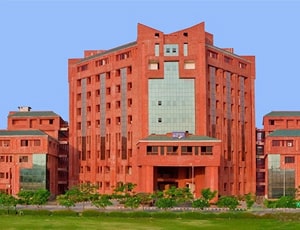
Types of Spider Veins (Sclerotherapy) in Sharda Hospital and its associated cost
| Treatment Option | Approximate Cost Range (USD) | Approximate Cost Range (INR) |
|---|---|---|
| Spider Veins (Sclerotherapy) | 237 - 369 | 19309 - 31137 |
DOCTORS IN 12 SPECIALITIES
FACILITIES & AMENITIES
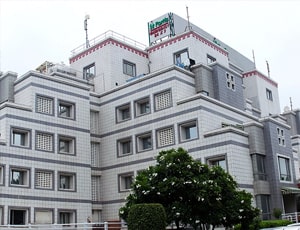
Types of Spider Veins (Sclerotherapy) in Fortis Flt. Lt. Rajan Dhall Hospital and its associated cost
| Treatment Option | Approximate Cost Range (USD) | Approximate Cost Range (INR) |
|---|---|---|
| Spider Veins (Sclerotherapy) | 254 - 405 | 20824 - 33369 |
DOCTORS IN 11 SPECIALITIES
FACILITIES & AMENITIES
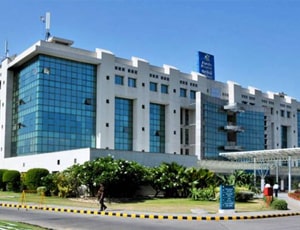
Types of Spider Veins (Sclerotherapy) in Apollo Hospital International Limited and its associated cost
| Treatment Option | Approximate Cost Range (USD) | Approximate Cost Range (INR) |
|---|---|---|
| Spider Veins (Sclerotherapy) | 253 - 405 | 20842 - 33236 |
DOCTORS IN 13 SPECIALITIES
FACILITIES & AMENITIES
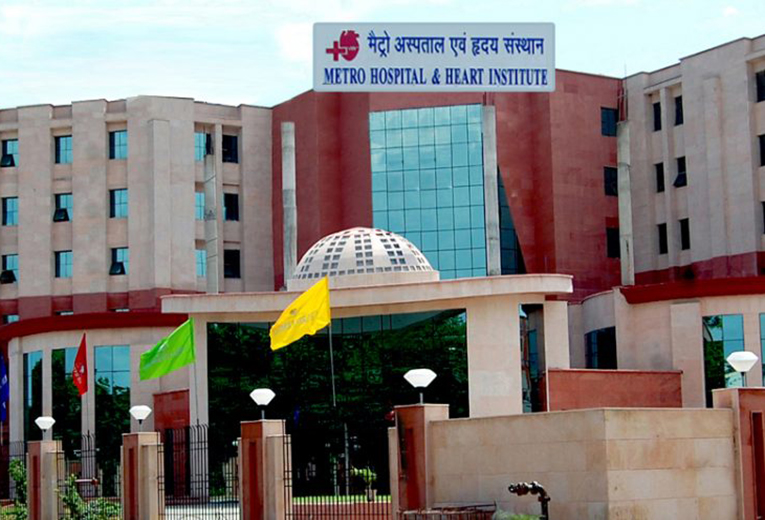
Types of Spider Veins (Sclerotherapy) in Metro Hospital and its associated cost
| Treatment Option | Approximate Cost Range (USD) | Approximate Cost Range (INR) |
|---|---|---|
| Spider Veins (Sclerotherapy) | 232 - 379 | 19000 - 30694 |
DOCTORS IN 12 SPECIALITIES
FACILITIES & AMENITIES

Dr. Rose Private Hospital located in Budapest, Hungary is accredited by JCI. Also listed below are some of the most prominent infrastructural details:
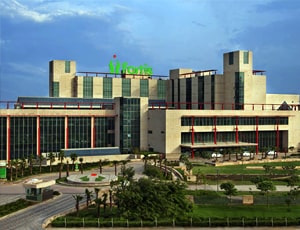
The cost for Spider Veins (Sclerotherapy) ranges from USD 530 - 600 in Fortis Memorial Research Institute
Fortis Memorial Research Institute located in Gurugram, India is accredited by JCI, NABH. Also listed below are some of the most prominent infrastructural details:
DOCTORS IN 14 SPECIALITIES
FACILITIES & AMENITIES
Sclerotherapy is an effective and minimally invasive treatment of varicose and spider veins. It is also known as spider vein treatment. This procedure involves the injection of a solution directly into the affected veins, causing them to shrink and eventually disappear.
Varicose veins treatment can improve the symptoms of venous insufficiency. This therapy is the primary treatment for small varicose veins in the legs. It relieves some of the spider veins symptoms, including ache, burning, swelling and night cramps.
Spider vein treatment typically results in the elimination of up to 50 to 80 percent of varicose veins that are injected with the treatment solution. It is a minimally-invasive procedure that ensures minimal recovery time as the treated veins tend to fade within a few weeks.
Otherwise healthy people with venous insufficiency that is poorly controlled with compression stockings are the best candidates for sclerotherapy.
The eligibility of the candidate is decided based on the overall health of the patient and the area requiring treatment, in addition to the reason behind the clot in the vein. The dermatologist helps select the correct chemical sclerosing agent, which is then injected into the blood vessel to make it collapse.
This treatment is not suitable for pregnant women and females on birth control pills. Selected veins may not be treated using sclerotherapy if that vein could be put into use during future heart bypass surgery.
Sclerotherapy is performed in an outpatient procedure, under the supervision of an expert dermatologist or a cosmetic surgeon. In rare cases, patients may require hospital stay following the procedure.
During sclerotherapy procedure, a selected salt solution is injected directly into the vein with the help of a fine needle. This solution typically contains two sclerosants, namely sodium tetradecyl sulfate and polidocanol (Asclera).
The solution is usually in the liquid form. It works by irritating the lining of the vein, causing it to swell and block the flow of blood. Finally, the vein will become a scar tissue and disappear after some time.
Sometimes a foam version of the solution may be used, usually when a larger vein is involved. Foam is preferred over liquid in this case because it tends to cover more surface area than liquid.
You may experience mild discomfort and cramping for one to two minutes during the procedure, especially when larger veins are injected. Spider vein treatment usually takes approximately 15 to 30 minutes. The number of veins injected in one session depends on the size and location of the veins.
After the procedure is done, your doctor applies compression and massages the area to keep the blood out of the injected vessel and disperse the solution.
There are several variations of the sclerotherapy procedure. The doctor may decide to use laser or ultrasound during the procedure for better guidance and results. The sclerotherapy cost for such procedures is higher than simple injection approach.
You will be able to get up, walk around, and drive yourself home after sclerotherapy procedure. You can resume your regular daily activities on the same day of the procedure. Walking and moving your legs are encouraged to prevent the formation of blood clots.
After sclerotherapy, you will be instructed to wear support hosiery or bandages to "compress" the treated vessels for about two weeks. Your doctor will probably advise you to avoid strenuous exercise and exposing the treated area to the sun for two weeks after the procedure.
In addition, your doctor will ask you to avoid aspirin, ibuprofen, or other anti-inflammatory drugs for at least 48 hours. Tylenol may be used if needed. Usually, it takes three to six weeks to respond, and larger veins respond in three to four months. Spider veins or varicose veins will not reappear if the treated veins respond to sclerotherapy.
Usually, sclerotherapy works for most of the patients, but there is no guarantee for success. Any procedure where the skin is penetrated carries a risk of infection. But the chances of infection requiring antibiotic treatment is estimated to be less than 1 in 1,000.
A few patients may experience bruises, leg pain, blood trapping, and raised and red bumpy skin after the surgery. You must inform your surgeon if you notice any of these side effects.
Besides these, some allergic reactions to sclerosing solutions and local anaesthetics can also occur. They can be serious, but they are extremely rare. A different solution can be used for subsequent treatments when allergic reactions occur.
Ask your healthcare adviser for the best multiple options and choose the one that meets your expectations
The cost of Spider Veins (Sclerotherapy) in Thailand starts from $1500. Healthcare Accreditation Institute, JCI are just some of the accreditations which top hospitals in Thailand hold where a Spider Veins (Sclerotherapy) is conducted.
Spider Veins (Sclerotherapy) cost in Thailand varies from one hospital to the other. The Spider Veins (Sclerotherapy) package cost usually includes all the expenses related to pre and post surgery expenses of the patient. The Spider Veins (Sclerotherapy) cost in Thailand includes the cost of anesthesia, medicines, hospitalization and the surgeon's fee. There are many things that may increase the cost of Spider Veins (Sclerotherapy) in Thailand, including prolonged hospital stay and complications after the procedure.
There are several best hospitals for Spider Veins (Sclerotherapy) in Thailand. Some of the most renowned hospitals for Spider Veins (Sclerotherapy) in Thailand include the following:
Upon discharge from the hospital after Spider Veins (Sclerotherapy) in Thailand, the patients are advised to stay for about 10 days for recovery. This is important to ensure that the surgery was successful. During this time, control and follow-up tests take place to check for medical fitness.
There are certain expenses additional to the Spider Veins (Sclerotherapy) cost that the patient may have to pay for. These are the chanrges for daily meals and hotel stay outside the hospital. The per day extra expenses in Thailand per person are about USD 50 per person.
There are many cities that offer Spider Veins (Sclerotherapy) in Thailand, including the following:
There are many Spider Veins (Sclerotherapy) surgeons who offer video telemedicine consultation to patients who need this treatment. Some of them include the following:
| Doctor | Cost | Schedule Your Appointment |
|---|---|---|
| Dr. Worapong Leethochavalit | USD 61 | Schedule Now |
| Dr. Tanaporn Termwattanaphakdee | USD 61 | Schedule Now |
The patient is supposed to stay at the hospital for about 1 days after Spider Veins (Sclerotherapy) for monitoring and care. During the recovery, the patient is carefully monitored and control tests are performed to see that everything is okay. If required, physiotherapy sessions are also planned during recovery in hospital.
There are more than 7 hospitals that offer Spider Veins (Sclerotherapy) in Thailand. These clinics have proper infrastructure for the treatment of patients who require kidney transplant. Also, these hospitals follow the necessary guidelines as required by the medical associations for the treatment of Spider Veins (Sclerotherapy) patients.
Some of the top doctors for Spider Veins (Sclerotherapy) in Thailand are: